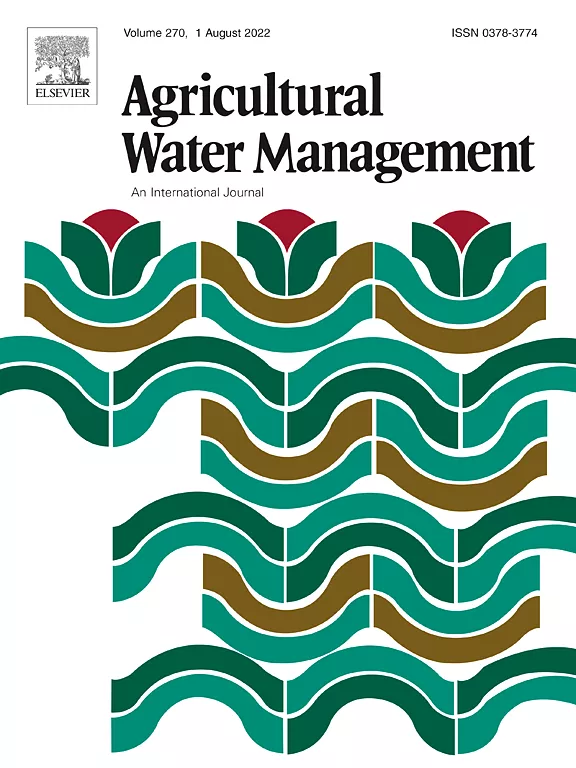Evapotranspiration and crop coefficients using lysimeter measurements for food crops in the hyper-arid United Arab Emirates
In the hyper-arid United Arab Emirates (UAE) irrigation is needed for food crops because there is limited rainfall of less than100 mm y−1 in the crop-growing parts of the UAE. Groundwater is the main source of irrigation water, yet it is a declining resource both in terms of quantity, and quality as a result of rising salinity. Law 5 has been passed by the Government of Abu Dhabi to manage groundwater extraction by limiting water takes to an amount that is considered to be sufficient to grow a given crop. In order to allocate these water takes, the Environment Agency – Abu Dhabi sought experimental data and a model platform to calculate equitable allocations for each vegetable crop. We designed simple weighing lysimeters to measure directly the water-use lettuce, capsicum, tomato, cucumber and zucchini grown in the field, as well as in a shadehouse and a cooled greenhouse for capsicum, cucumber and tomato. Total crop yields were measured via progressive harvests through to the end of the growing season. The yields in the greenhouse were the highest. The crop water-use efficiency (WUEC, kg crop per m3 crop evapotranspiration ETC) was three fold higher in the greenhouse (≈ 30 kg m−3) than in the shadehouse or field (≈ 10 kg m−3). However, when the water used to cool evaporatively the greenhouse was accounted for in the water productivity (WPI kg crop m−3 water for irrigation and cooling) there were no differences between the field, shadehouse and greenhouse. So whereas the farmer benefits from higher yields in the greenhouse, there is no advantage in terms of water productivity. However, use of alternative waters for greenhouse cooling, such as treated sewage effluent, could be used to protect groundwater. Our water-use data were used to calculate the seasonal pattern of the FAO56 crop coefficient, KC, through the piecewise linear phases of crop growth, the initial (KCini), middle (KCmid), and the end (KCend) of the growing season. These KC values were compared with recent reviews of FAO56 for vegetables. Due to the various training systems for the crops in this study, the KC values varied considerably, with KCini ranging from 0.2 to 0.5, KCmid from 0.5 to 1.35, and KCend from 0.2 to 0.7. These KC values will be used in our Crop Calculator Decision Support Tool (DST) to implement Law 5.
Year
2022
Publication Source
Agricultural Water Management
Publication type
Scientific Paper
Volume/Chapter/Issue
272











